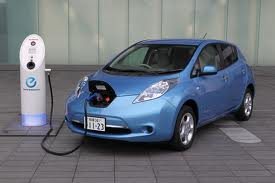There’s a new form of sticker shock, and although Americans will love it, it’s bad news for hybrids and electric vehicles (EVs).
Filling up at the gas station is suddenly shockingly cheap, which is always bad news for efficient cars. Across the US, the average price per gallon is $3.08, down 16% since July when it cost $3.68.
A barrel of oil has dropped from about $100 to $80 because of simple supply and demand. Still weak economies have low demand and the
emergence of the US as a petro-state means plenty of oil is available.
Another problem for electric cars is that conventional cars now get much better gas mileage.
Unfortunately, this is happening just as electric vehicles are making more headway in the market, with sales of plug-ins and all-electric cars up 30% so far this year, triple that of 2012. 88,149 cars sold from January through September 2014, according to the Electric Drive Transportation Association (EDTA).
In October, governors of eight states agreed to collaborate to get 3.3 million zero emission vehicles on the road by 2025.
All told, 255,766 plug-in and full electric vehicles are on US roads and when hybrids are included, they make up 3.59% of the US car market, reports EDTA.
Surprisingly, EV sales are growing the fastest in Atlanta, Georgia – from 1469 vehicles sold last year to 10,482 this year. Like California, which retains its wide lead in absolute numbers (77,000 as of March), the Atlanta area is crushed with traffic, making little things like single-occupant use of the HOV lane an incentive. Georgia also offers a $5000 tax credit and exempts EVs from tolls.
The Nissan Leaf still holds the lead.
Read our article, 10 Best States for Electric Cars.

The magic combination for growth of the EV segment is in Norway, where high gas prices and low electricity prices have led to an 11.2% share of the market. Besides being expensive to gas up and cheap to run on electricity, the government stokes sales with strong policies: no car taxes, parking fees or tolls, and an extensive public charging infrastructure.
One thing is for sure. The less gasoline costs, the more people drive, and that pushes greenhouse gas emissions higher. The impact won’t be felt with a few months of low prices, but if they stay stable, people will start guzzling gas again.
"Lots of factors suggest that demand is much weaker than what the industry has been planning for. I don’t see prices going back to consistent highs anytime soon. The picture seems like it’s going to get worse," Andrew Logan, director of Ceres’ oil program, told Climate Central.
And good luck raising the gas tax in the US!
A Silver Lining?
If prices remain low, say at $75 per barrel, that could make Canada’s tar sands oil less competitive, discouraging expansion, especially if the Keystone pipeline isn’t approved.
In its flawed environmental analysis, the State Department said $75 a barrel could be a turning point, where it costs too much to ship the oil by rail. Higher transportation costs could have a "substantial impact on tar sand production levels," they say.
Indeed, expansion projects have already been cancelled by Statoil, Shell and Total.
More stats on the rise of EV sales:

Don’t be fooled this will only be short lived.